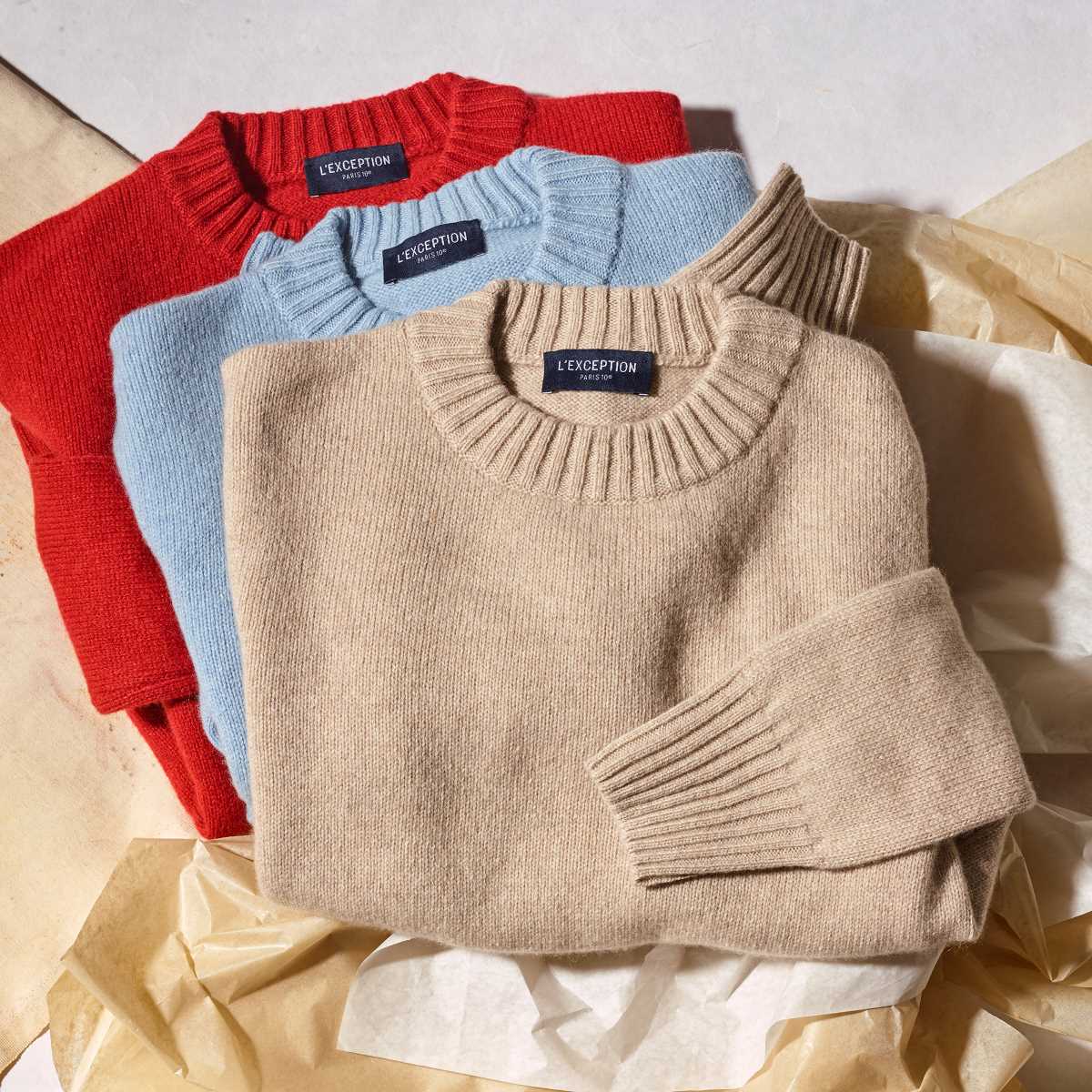Why opt for cashmere?
Cashmere is a noble wool perfect for making cashmere sweaters or silky soft scarves. Cashmere is warm, traditionally used to make winter products and accessories such as blankets, scarves, shawls, gloves. It is nevertheless fine and light, which makes it one of the most pleasant fabrics to wear.
Discover our women's cashmere favourites
Discover our men's cashmere favourites

Cashmere producing and exporting countries
Cashmere was born in the fifteenth century in the region bearing its name, it is mostly produced in areas corresponding to today's India and Pakistan. Today, independent Mongolia and Inner Mongolia, an autonomous region of the People's Republic of China, are the leading cashmere exporting countries. These regions account for 90% of the world's cashmere production, i.e. between 13,000 and 18,000 tons per year. The other cashmere producing countries are Pakistan, India followed by Iran. Cashmere production remains highly localized around the globe.
Cashmere nicknamed "diamond fiber" or "soft gold" is traditionally exported to developed countries, especially Europe. High-end brands and the luxury sector represent the highest demand for this material. Growing demand from China has also shaken up the market in recent years, leading to an increase in the price of this material. On the other hand, China continues to export 55 th of its production abroad.
Processes of transformation of the material ( From shearing to garment )
The cashmere goat or Tibetan goat originally comes from the Tibetan highlands and the Himalayas, it is a species of goat facing very cold climatic conditions, with temperatures that can go down to 40 °C. It is during this period, that the goat produces a coarse hair called jar, under which remains their precious down, the cashmere, which is used to design clothing. The cashmere fiber is obtained either by shearing the hair or by combing the goats, this process usually takes place during the spring and summer depending on the region. Following the collection of hair, it is necessary to separate the jarre, the long and thick winter hair, from the fine down which will become the cashmere. Then, cashmere follows the same steps of transformation as wool: washing, drying, carding, combing, bleaching, dyeing, weaving, assembly. The composition of cashmere can contain between 2 and 24 threads which will determine its thickness and strength.
Is cashmere compatible with ethical and responsible fashion
The big high-end brands (Samsoe & Samsoe, Tricot, Noyoco, A.P.C., Sarah de Saint Hubert)mainly monopolize the cashmere market by offering trendy products. Cashmere sweaters are the most popular for their comfort and softness, with as many cashmere products for women as for men. However, is this highly regarded raw material ethical and responsible? Sustainable cashmere depends on two key factors that are intimately linked: human and animal welfare. Going to the field by regularly meeting the producers, their difficulties, their working conditions is essential to understand their trade and preserve their know-how.
To design a woman or man cashmere, trendy but also ethical and sustainable, several criteria of transparency must be analyzed:
The animal welfare and their external environment:the quality of the food, preservation of biodiversity, quality of the living environment (soil, climate), herd management, fight against mistreatment, time spent with the animal, analysis of their stress on a daily basis and during shearing/combing, consideration of health needs (vaccines, antibiotics, veterinary support and animal osteopath)
The living conditions of the breeders:working hours, equipment used, entourage and social life of the teams, labor management, fair compensation, safety at work.
The transformation process: analyze the ecological footprint of each step of the process (washing, drying, carding, combing, bleaching, dyeing, weaving, assembling) and minimize negative externalities.
Exporting: analyze the ecological footprint related to exporting in terms of transportation, packaging, delivery. The challenge for the textile industry is to establish more transparency and traceability for the coming years, regarding the origin of raw materials. Today, several committed actors are trying to advance the cashmere industry such as the NGO AVSF (Agronomists and Veterinarians Without Borders), GOTS (Global Organic Textile Standard) which is a certification of organic textile or The Good Cashmere Standard (GCS) respecting the animal welfare of goats, and ensuring fair remuneration of farmers in Inner Mongolia. In addition, banning intensive breeding and favoring smaller herds represents a lever for action.
Discover our ECO X CEPTION criteria at L'Exception
How to care for cashmere?
Many techniques exist to care for your cashmere sweaters. You may be wondering how to properly wash your sweater or how to iron your cashmere sweater without damaging its softness? We give you our care tips for washing, drying, ironing and much more in our article: 10 tips for caring for your cashmere sweater.
Here's our women's cashmere selection
Here's our men's cashmere selection





